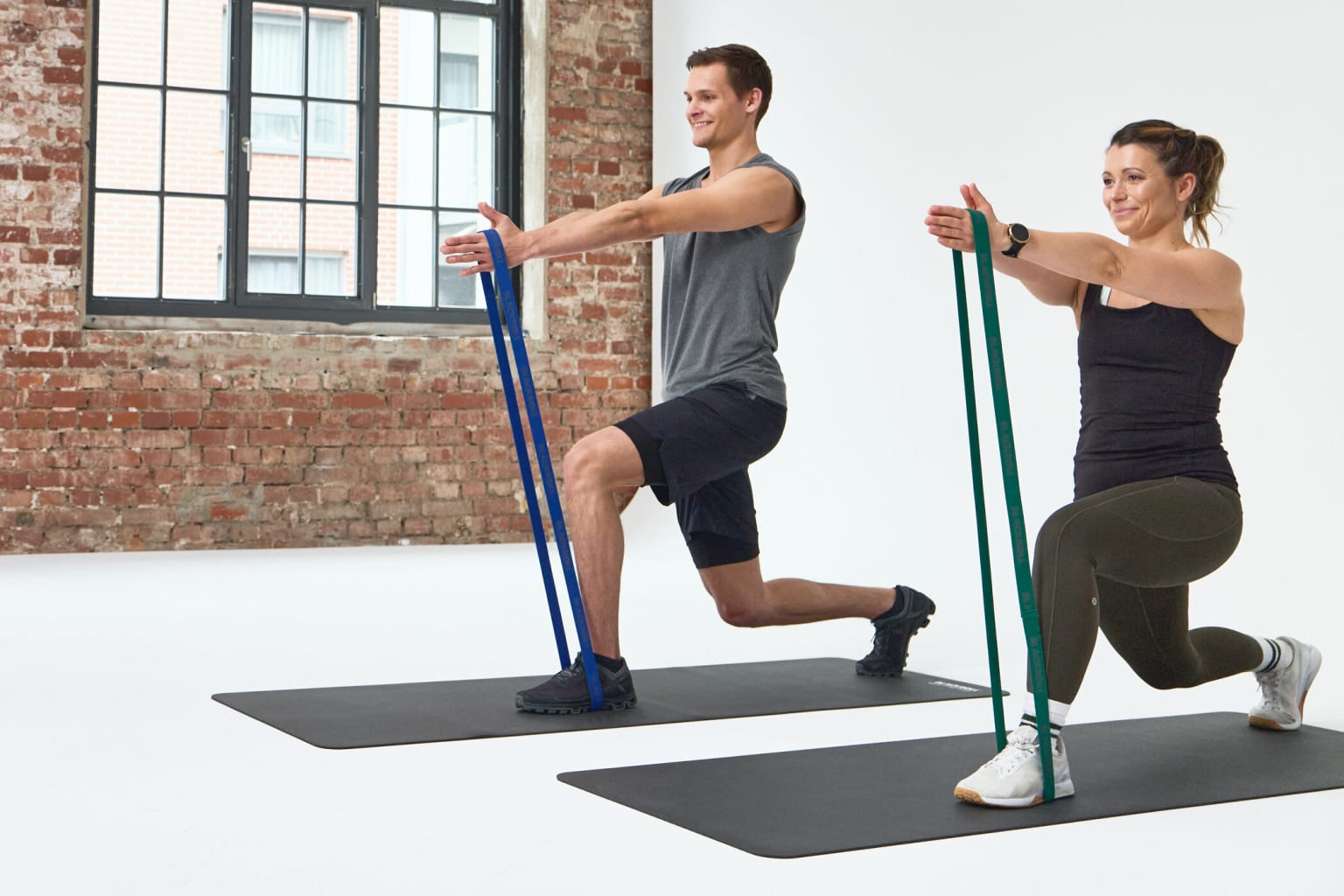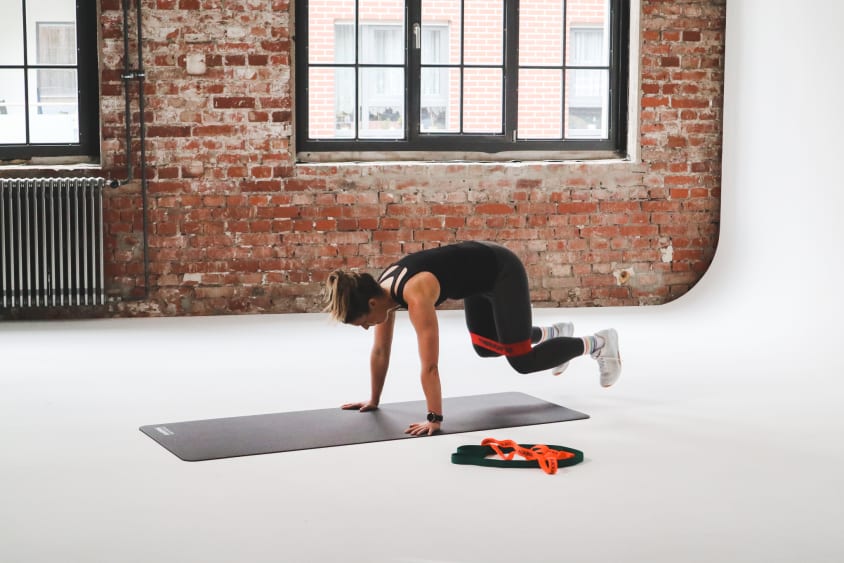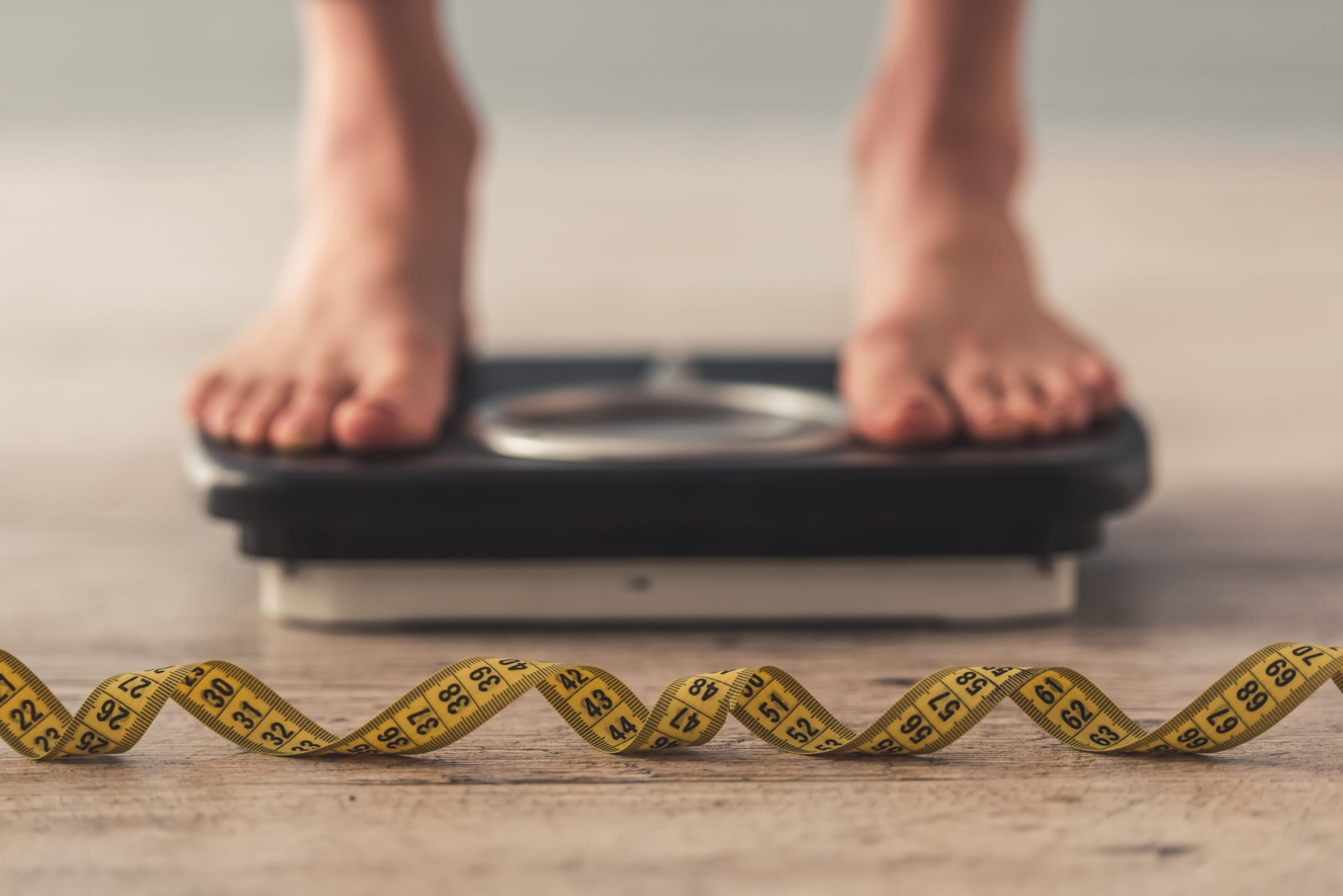
Lose weight thanks to calorie deficit: Your key to success

Are you looking to reduce body fat or lose weight? Then you should strive for a calorie deficit
You'll maintain a healthy weight with a balanced calorie intake. This means giving your body just as much energy as it needs on a daily basis. The energy provided is directly consumed.
A positive calorie balance means that you gain weight as your body receives more energy than it consumes. Your body stores these calories as energy reserves in the form of fat. Seems logical and understandable, right?
Our goal for losing weight is therefore a negative calorie balance, also known as a calorie deficit. This is achieved by reducing calorie intake or increasing energy consumption. Your body then begins to mobilise sources of energy. Fat is then used and burned to provide energy. By combining both approaches, i.e. consuming fewer calories through nutrition and increasing energy consumption through sport, you will lose weight more quickly and easily.

Calculate basal metabolic rate
Muscles require energy. The more muscle mass you have, the more energy you'll burn. This even happens while sitting down and not moving at all. This is the so-called basal metabolic rate that your body needs to maintain all of its functions.
If you burn more calories than you consume, you will achieve a calorie deficit and lose weight. You should factor in a calorie deficit of around 500 kcal per day to achieve healthy, slow, consistent and, above all, long-term weight loss.
But how many calories do you actually burn? You can easily analyse this using fitness watches. In the following image, you'll find out how to calculate your basal metabolic rate of daily calories. The basal metabolic rate will tell you how many calories you need to maintain your body's basic functions, such as breathing.
| Women | 0.9 x body weight in kg x 24 hours = basal metabolic rate in kcal |
| Men | 1.0 x body weight in kg x 24 hours = basal metabolic rate in kcal |
Since you don’t lie around all day without moving, activity will also count towards your daily basal metabolic rate. Your daily calorie requirement increases. For this, the chart shows which PAL value you should multiply your basal metabolic rate by to calculate your actual daily calorie requirement.
Calculate as follows: calculated basal metabolic rate in kcal x PAL value = total calories per day
| 1,2 - 1,3 | Sedentary lifestyle involving sitting or lying only |
| 1,4 - 1,5 | Sedentary lifestyle with little or no strenuous activity |
| 1,6 - 1,7 | Sedentary activity with additional energy requirement for activities involving walking or standing, little or no strenuous activity |
| 1,8 - 1,9 | Primarily active lifestyle involving standing and walking |
| 2,0 - 2,4 | Physically demanding physical work or highly active lifestyle |
You need to burn 7,000 calories to lose 1 kg. By reducing your calorie intake by 500 kcal each day, you can factor a weight loss of +/- 0.5 kg per week.
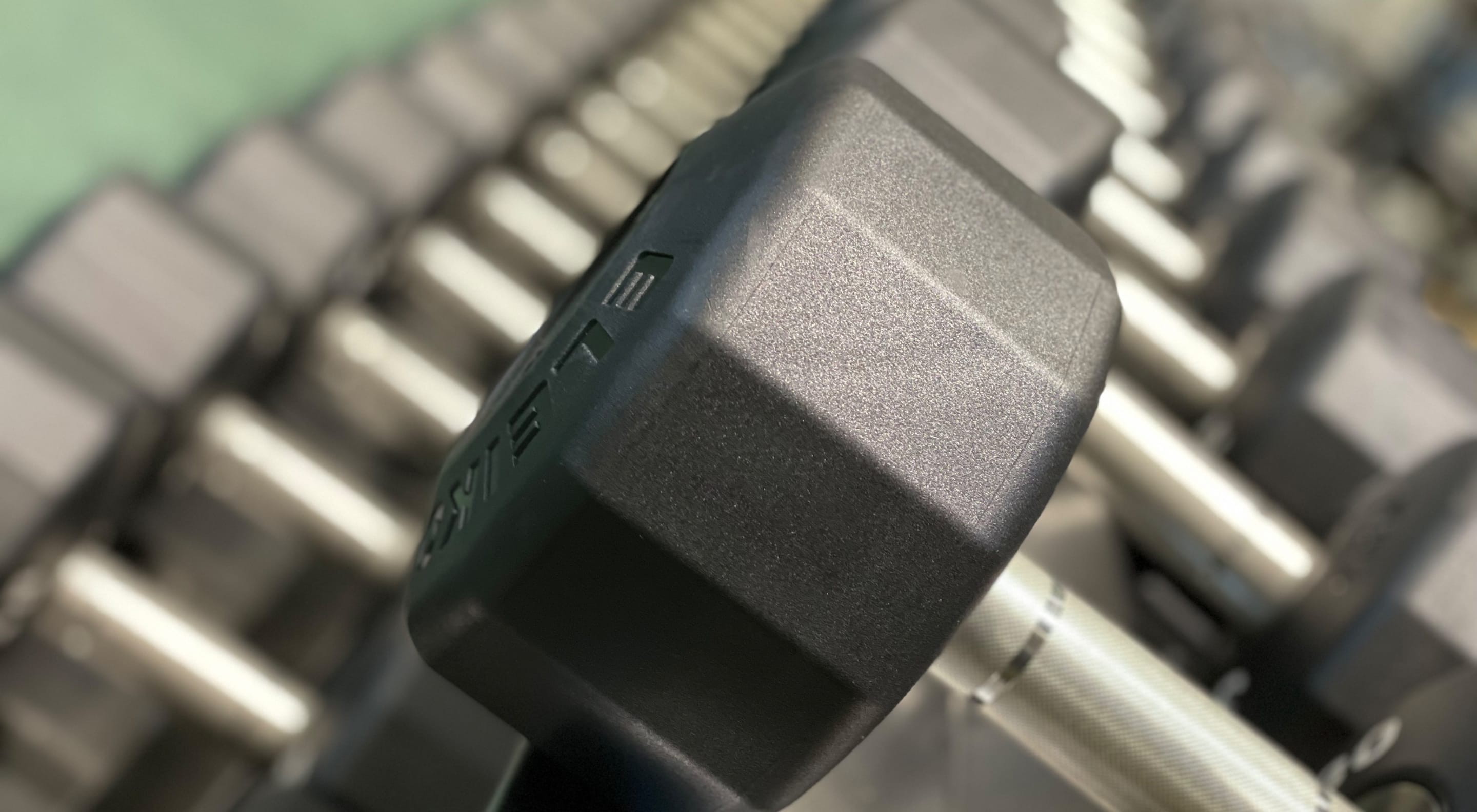
The clever option: Calorie deficit + muscle training
You'll reach your weight loss goal more easily by combining nutrition with sport and building muscle.
The more muscle mass you build, the greater your calorie requirement. Your body burns more calories with an increased muscle mass. This means you can consume more calories per day without gaining weight. At the same time, this means that it's easier to reduce calories. If you burn more calories than you consume, you'll achieve a calorie deficit and lose weight faster or reach your goal weight.
At the same time, you'll increase the amount of oxygen to all of your body's cells. This vitalises your body and also boosts metabolic activity. You'll create tensile and pressure loads that supply your cartilage with nutrients and maintain health. Bones also benefit from this load as they are subjected to a constant breakdown and formation process and the more impact on them, the stronger and more resistant they become.
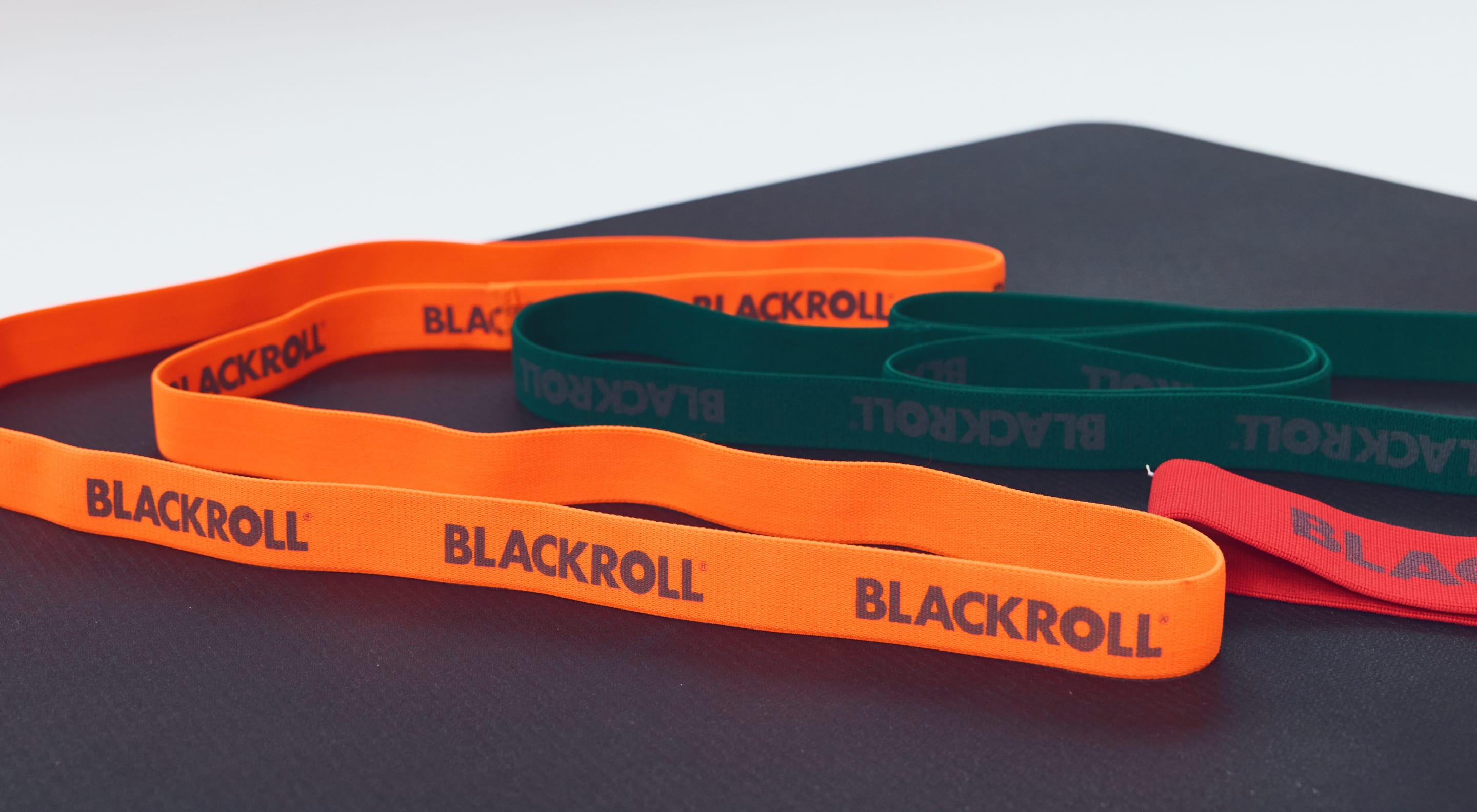
Muscle growth & weight loss with fitness bands
To encourage muscle growth using fitness band workouts, you'll need a relatively substantial stimulus that amounts to at least 60% of your maximum power. While fitness bands don’t provide a measurable load in terms of power, which you must subjectively apply yourself, you can completely rely on how you feel. On a scale of 0-10, whereby 0 is no effort and 10 is maximum effort, you should work out between 5 and 6. This will stimulate muscle growth and increase your daily energy consumption as a result. This makes losing weight and building muscle fun.
04 Tips for losing weight without counting calories
- Opt for a mostly plant-based diet. This provides your body with sufficient vitamins, fibre and minerals.
- Reduce the consumption of meats where possible as these are typically high in calories. They also provide very few nutrients.
- Use vegetable protein if you are supplementing your diet with protein powder. Animal protein increases the risk of cancer.
- Eat a large salad with a little linseed oil before main meals. This not only provides key nutrients and essential anti-inflammatory Omega 3 fatty acids (from the linseed oil) but also fills you up so that you'll naturally eat less during higher calorie main meals.
- A vegetable soup can also replace a salad as a starter.
- Eat slowly and chew your food. It takes around 20 minutes for your brain to provide the sensation of feeling full.
- Include as many components of the 5 main food groups as possible with each meal (without animal products): vegetables, fruit, pulses, (whole) grains, nuts/seeds.
05 Summary of how to easily & quickly lose weight
Calculate your basal metabolic rate and follow our weight loss tips. By consuming fewer calories than you burn, you'll achieve a calorie deficit and, in turn, you'll lose weight. How to lose weight without doing sport. Muscle training and increased muscle mass help you burn more energy to more easily achieve a calorie deficit: this helps you quickly and healthily lose weight.



